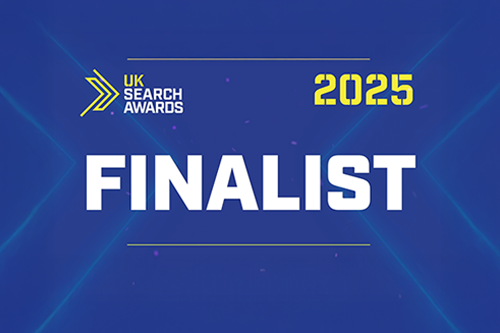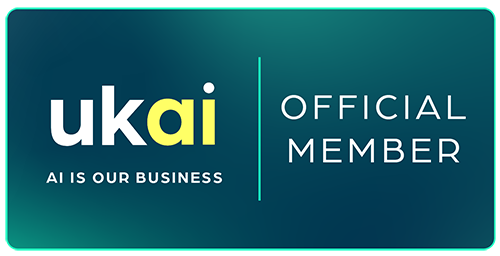As anybody who has ever (successfully) led a team will testify, the most important element of any operation is the people. The promise of AI may be utopian but early evidence suggests that the reality of AI-powered teams in the near term, will be a little more prosaic.
The current wave of Artificial Intelligence, or to name it correctly Machine Learning, was developed by the media technology giants, Google, Microsoft, Meta etc and so it is not surprising that the ‘Ad Agency’, along with finance, find themselves as the unlikely trailblazers for developing an integrated Human/ AI operating model.
Push is a Microsoft partner and so, with early Beta technology access, were quick to react to the change. By mid 2023 the co-founders had been to the USA to meet with AI industry experts and reorientated the business strategy around AI, by autumn the website was overhauled and by Christmas the Push was restructured to deliver the new strategy. This is what we have learned so far…
"This is the biggest repositioning we’ve ever done as an agency. AI is going to have a huge impact on society. By default, it’s going to be bigger than the launch of the internet. We are on top of the AI revolution and can help businesses get through this transitional period and take advantage of this period of massive innovation, change and huge opportunity." Steve Hyde, Push Co-founder.
Structure follows AI Strategy
AI is superhumanly good at some tasks and pretty useless at others and so that means however your organisation is structured, it is going to need to change to get the most out of AI. Clear leadership is critical, senior leaders need to engage with AI and understand, in broad terms, how they want to integrate it into their operation.
In order to develop this strategy, the first step is to create a dedicated team to research the options and implications of AI. In early 2023 Push appointed an AI Integration Director and launched the Digital Innovation and Automation Lab (DIAL) to test and assess the AI options whilst insulating the wider organisation from the disruption AI inevitably brings.
As the strategy became clearer the wider operations team was reorganised to suit. With new AI tools being launched on a daily basis, DIAL continues to ‘horizon scan’ the opportunities, test the more promising tools, and manage the integration of the best into the operations team.
Leadership in times of change
AI has totally disrupted the digital marketing and advertising sector and it continues to evolve. The scale and scope of this change is unquestionably at the strategic level and in many ways reminds me of the years following the 9/11 attacks when the military and intelligence community needed to rapidly adapt to meet the new, brutal, world order.

At that time of the attacks I was a Royal Marines Officer and I was quickly drawn into the Special Operations world and tasked with raising and commanding a new type of combat unit. My first deployment was to Baghdad to join the US Joint Special Operations Command (JSOC) which was commanded by General Stanley McChrystal.
General McChrystal, unquestionably the most capable leader I have ever had the privilege of working for, was tasked with managing the conflicting priorities (and egos) of the world's premier intelligence services and military units. His objective was to deliver a single coherent response to the global Al Qaeda threat during a period of intense scrutiny.
At the time this task, coinciding with the conventional military operations in both Afghanistan and Iraq, felt overwhelming. This was unquestionably a period of intense disruption but I learned a lot observing his ability to balance unwavering operational focus with a calm composure when dealing with constant change.
"Efficiency remains important, but the ability to adapt to complexity and continual change has become an imperative.” Gen. Stanley McChrystal
The quote refers to the Global War on Terror but he could just as easily have been talking about the challenges of integrating AI into an operation. The most valuable lesson I learned during my time with JSOC was to focus on the ongoing operations but also to be fully prepared to exploit opportunities and counter threats as soon as they arise.
Managing people in times of change the era of AI
As an AI early mover, Push got to make all the schoolboy errors, the most obvious of which is to avoid encouraging everyone to experiment with everything simultaneously. The consequences were predictably chaotic but the period did teach us three valuable lessons.
Lesson 1
The first lesson is that the current rash of marketing AI tools are primarily tactical in nature, meaning that it takes an operator and not a manager to understand their optimum application.
Lesson 2
The second lesson is that AI almost never provides a complete shortcut or total operational panacea. The value of (the current crop of) AI tools lies in optimising certain tasks within the operation, leaving humans to provide context, nuance and good old ‘common sense.’
Lesson 3
The third lesson was that unless a critical review process is put in place, people will quickly become over-reliant on AI outputs and lose any healthy scepticism.
These three lessons led to a reassuringly humanist conclusion, AI is unimaginably good at certain tasks but humans are still the most important part of any team and so AI must be implemented in an human friendly manner.
As a result of this experience we realised the need to build a two tier AI implementation process. On the one hand it was obvious that the wider team needed to be insulated from the constant disruption of testing AI tools, whilst on the other hand it was equally obvious that User Led trial and error was going to be critical to success.
The first step, outlined above, was to set up a dedicated team (DIAL) which was restricted to R&D and the identification of potential Use Cases. The next step was for the Ops team to identify proactive and curious Power Users who could take on the AI tools and test them critically against the Use Cases.
Once the Power Users had completed their tests, almost always modifying the initial Use Case, the tools were rolled out to the wider operational team for further testing. As the team became increasingly proficient with the AI tools, their ambitions grew and in most cases the next barrier to growth was access to data.
The D word and Co-pilots
In the era of AI where software applications (aka Apps) are becoming increasingly disposable, the true value of an organisation lies in its proprietary data. In simple terms, once you have a generative AI tool and plug it into a section of your own data, with a few well crafted prompts (aka instructions) you have an AI Co-pilot.
AI Co-pilots are driving most of the AI driven optimisations in digital marketing today but the barriers to entry are nearly always related to accessing and parsing the right data.
IT security clearly has a critically important role to play in protecting our proprietary data but instinctive, defensive resistance to change will bring significant and increasing opportunity costs as AI becomes more prevalent. The first step is to understand what data you have and where it is stored, some will be easily accessible without risk whilst the rest of it will require a more detailed conversation with your CIO.
The next problem you will encounter is whether your data is structured or unstructured, standard estimates indicate that around 20% of an average companies data is structured (quantitative, captured in tables stored in a database and adheres to a predefined data model) whilst the rest is a jumble of file types and versions held as unstructured data. The good news is that AI is infinitely better than humans at sifting through data but it still needs a solid framework, and ideally needs to be held in the right type of database.
Once you have access to your desired data set (and your CIO has had a stiff drink) then you are at the beginning of your Co-pilot journey. Essentially a Co-pilot is an AI tool that has been ‘programmed’ to the requirements of a specific task and then uses recent contextual data, as well as your own company processes and services, to cut research and ideation tasks from hours to seconds. Think of it as a superhuman colleague who has been fully briefed and remembers your entire company’s written and numerical data who can answer any question.
To get the best out of your new indefatigable colleague, you need to become a tough taskmaster so get it to deliver research, create concepts or suggest options for well defined tasks like Campaign Strategies, Creative Options, SEO copy or email sequencing. Once your organisation is comfortable with Co-pilots, the next stage is to build several of them into a single, all informed, Executive Support Engine that allows all of the companies data driven functions to be delivered through a single, coherent interface.
Over time Executive Support Engines will learn (for want of a better term) the repeat tasks allowing them to act almost Autonomously.
Attitude not Skill Set
Finally we must consider the cost-benefit ratio because regardless of the fanciful headlines, AI will not deliver immediate results and some of your people will simply not survive the transition. Such a big shift in operations is going to take commitment investing in new people and processes but also with the knowledge that other opportunities will need to be sidelined.
All the time you need to invest in learning how to make AI work with the team is an investment in the future, nobody pays you to sit down and do the grunt work. There will also need to be a shift in recruitment mentality as the skills required do not currently exist, and so to borrow a phrase from the 1990s we need to Recruit for Attitude, not for Skill Set.
Conclusion
AI is unquestionably here to stay and whilst it will automate numerous routine tasks over the coming years it is a very long way of becoming autonomous. This means that the critical element of every AI-powered team will be the human element. The experience, flexibility and imagination of the team will determine the quality of the team's output whilst AI will determine its scale, speed and scope.
Our team members are the key to unlocking the potential of AI but they can also provide the blockers. Not everyone is ready to embrace such change and some people will actively or passively resist it. The role of Leaders in this brave new world is not to select which AI tools to use, but rather to support end-users in implementing AI throughout the organisation.
This transition from the current state to AI-powered teams will be neither simple nor quick but, once you get it right, the benefits will be … disrupting.











































